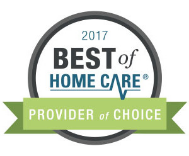Bringing Baby to Work

Originally appeared in the New York Times
By Lisa Belkin
Carla Moquin is the founder of the Parenting in the Workplace Institute, based in Framingham, Mass., which helps companies design programs that allow workers to bring new babies to the office regularly. I mentioned her earlier today, when writing about ways to reduce the cost of child care, and what follows is an interview with Carla about the nuts and bolts of such an approach. My questions are in bold.
Bring the baby to work? Why?
Allowing babies in the workplace costs an organization almost nothing and provides extensive business benefits. Employees voluntarily return to work earlier after a baby’s birth. Workplace morale, employee retention and long-term productivity are higher. It enhances parent-child bonding, allows more mothers to breastfeed for longer and gives new parents and babies a built-in social network.
How many offices are doing this around the country right now?
We have confirmed more than 110 organizations that currently allow babies in the workplace. These companies range across more than 36 different states and more than 20 different industries, including credit unions and banks, law firms, retail stores, schools, government agencies, software companies and consulting firms.
Are we talking only infants, or older children too?
The Parenting in the Workplace Institute is currently focusing on babies-at-work programs, in which babies can generally come to work every day until six to eight months of age or crawling, whichever comes first. There are lower safety and potential liability issues with non-crawling babies. It’s also harder to care for a crawling baby while getting work done, and older babies often need more opportunities for hands-on stimulation than exist in most workplace environments.
Some companies do allow older babies to come to work and have been successful with this. For example, Zutano, an internationally distributed clothing designer and manufacturer in Vermont, allows babies to come to work with their parents until they are a year old. Zutano actually has five babies coming to work right now in an office staff of 18 (and it’s going extremely well). They will soon have a sixth who will be brought to work by his father.
A few companies, such as Mothering Magazine, allow children of any age on a daily basis. The core principle for all of these organizations, however, is that the children can’t be disruptive to the work environment and parents are still responsible for their work. The Society for Human Resource Management estimates that 29 percent of businesses allow children (of varying ages) at work on an occasional basis.
How does this work, step by step? What policies should be set up in advance?
Most companies set up specific guidelines for parents and coworkers. These are sometimes informal, but there are often detailed, written policies. These policies designate things like a location where parents can go to breastfeed or to take babies if they cry for more than a few seconds, as well as where diapers should be changed (and how they should be properly disposed of).
Companies also specify that parents are still responsible for completing their work and that the babies cannot be substantially disruptive to the work environment, as well as that coworkers can’t play with the babies for long periods and not get their own work done.
The key to success for these programs is treating them like any other workplace policy — anticipating potential issues and addressing them ahead of time (and adjusting as needed as time goes on).
An example of preventing potential problems is a provision in many companies involving “designated alternate care providers.” Parents choose one or two coworkers (in advance of bringing the baby to work) who volunteer to watch the baby for brief periods if the parent can’t.
And physical logistics? Where do people put these babies in an office?
Babies usually just stay with their parents in their regular work area. Babies have successfully been brought to work in cubicles, offices,and open-plan spaces, as well as in schools (by teachers and administrators) and retail stores. We have heard that the Pack ‘n Play is popular, particularly for parents in cubicles. Parents bring whatever equipment they think is most useful for their particular baby and job situation, although some companies limit the number of big pieces of baby gear.
Parents can also make use of baby carriers (slings, wraps, etc.). They just keep the baby in the carrier or in their lap (such as on a nursing pillow) while they’re at their computer or interacting with coworkers or customers. It generally takes a few days of adjustment for parents to get into an effective rhythm of caring for their babies while doing their jobs, but parents quickly learn ways of being efficient. Just like parents at home with their babies find ways to get things done. It helps that babies in the first six months sleep much of the time.
























